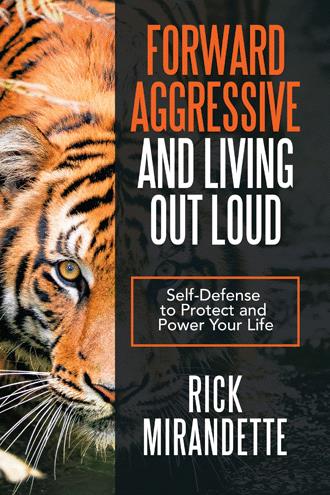I have been teaching martial arts, self-defense and fitness for 45 years. My interest and curiosity in the arts, sparked by Hollywood movies showing superhuman feats of fighting ability, took me to many dojos (Japanese for martial arts school), seminars, competitions and special training classes both in the U.S. and abroad. I studied a few styles whole-heartedly for many years, mastering numerous techniques and receiving high ranks. I also asked how, why and what if - a lot - in an eager attempt to learn but also with some innate skepticism. Highly choreographed exhibitions where senior-aged instructors were able to overwhelm seemingly endless numbers of young, strong attackers, at the same time, were more than suspect. I enthusiastically volunteered when master martial artists needed someone to demonstrate their devastating techniques on. It’s called “Feeling the hands of the master.” For me, I wanted to know exactly how these techniques worked and what they felt like. I wanted to know what in martial arts was real and what was myth, hype and good showmanship. Some styles have a very devoted following who do little questioning of their senseis (instructors). Some instructors, with large egos, might interpret a student’s questioning of a technique’s application and viability as challenging and disrespectful. Other instructors’ welcome scrutiny and have much depth to draw from. For the most part, in my travels, I found genuine people doing their best to pass on a tradition and what they found valuable. In my dojo, or to-chang (Korean for school), the aim is to build the students’ capabilities, character and confidence.
Some say that martial arts training and self-defense training are different animals and that karate doesn’t work when faced with real-life violence. But there are many different styles of martial arts. Some focus on traditional forms and classical movement. Others emphasize physical combat with varying degrees of contact allowed in practice. In my training over the years with “master instructors” (a totally subjective title, by the way), I recognized that some of the concepts being taught, although well-intentioned, were lacking in judgment and were potentially dangerous, putting a student at greater risk.
I once asked one of my master instructors, who had been teaching for 30 years, what to do if you were held-up at gunpoint. The answer he gave is shocking to me now but at the time I supposed my instructor knew what he was talking about. He was older and experienced, right? He wouldn’t give bad advice, would he? He was wearing a black belt with many stripes on it indicating his high rank. He spoke with such authority. In this scenario, even though he was offering what he thought made sense, he was dead wrong. Without any inquiry into the circumstances of the situation such as the setting, number of assailants, their mental state, their age, where the players were positioned, type and number of potential weapons present, what the demands were, and what other options may be available, he told me that if the gun was in range, even though pointing at you, you should kick it. KICK IT?! Did I hear that right? Because he was a tournament point fighter, he was good at getting points by kicking so, his advice was to kick the gun. Hmmmm…. I guess the kick hits the gun or wrist perfectly and magically disarms the assailant so you can, somehow, move in, subdue him, recover the weapon and restrain him or them, until the police get there. You imagine the police will escort the bad guy/s out and thank you for your public service and incredible bravery while being thoroughly impressed with your martial arts adeptness. But, doesn’t kicking the gun actually increase the chances of it going off? Questioning would be seen as challenging and disrespectful.
About six months later a friend of mine was working in a convenience store late one evening when a man wearing a hoodie walked behind the counter, pointed a gun at him and demanded the money in the cash drawer. My friend, who had trained in karate for about a year, kicked at the gun. The gun went off, the bullet hitting him in the shoulder. No big deal, right? We’ve all seen the movies where the hero simply fights on after putting some gauze on the wound or someone announces that the bullet went clean through. The hero continues barely noticing that he was shot. Not in this case. The bullet that hit my friend in the shoulder, ricocheted off a bone and cut across both lungs, causing massive hemorrhaging. He died before help arrived. His martial arts moves and self-defense strategy got him killed where if he had done nothing, odds are, he would have been talking to the police as they filled out the robbery report. I learned to question everything.



